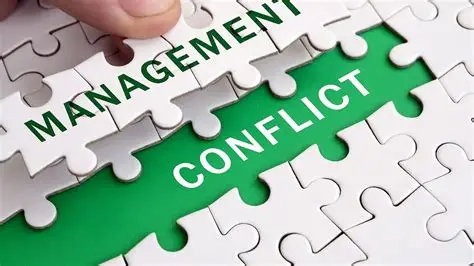How Do You Manage Conflicts Within the Project Team or With Stakeholders? Facilitating Resolution, Aligning on Objectives, and Ensuring Harmony

Conflict is a natural part of any project—especially when deadlines are tight, stakes are high, and multiple personalities or interests are involved. Whether it arises between team members or with external stakeholders, conflict can either derail progress or become a catalyst for better communication and stronger alignment—depending on how it’s handled.
The key lies in addressing conflict early, constructively, and with a clear focus on shared goals.
1. Recognize the Sources of Conflict
Conflicts typically emerge due to:
-
Misaligned goals or priorities
-
Poor communication
-
Unclear roles or responsibilities
-
Resource constraints
-
Personality clashes
Identifying the root cause is essential to resolving issues without simply addressing surface-level symptoms.
2. Facilitate Open Communication
Create an environment where team members feel safe to voice concerns. Use techniques like:
-
Active listening to understand different perspectives
-
Asking open-ended questions to encourage dialogue
-
Clarifying misunderstandings in real time
Encouraging respectful discussion prevents small issues from becoming larger disputes.
3. Align on Shared Objectives
When conflicts arise, refocus the conversation on the project’s core goals:
-
What are we trying to achieve?
-
How does each person's perspective support (or challenge) those goals?
-
Where is there common ground?
This keeps the team aligned and shifts focus from personal disagreements to mutual success.
4. Use a Structured Conflict Resolution Process
When informal discussions don’t work, implement a more formal process:
-
Define the problem clearly
-
Allow each party to share their view
-
Explore possible solutions collaboratively
-
Agree on next steps and responsibilities
If needed, involve a neutral facilitator or project sponsor to help mediate and guide the resolution.
5. Maintain Professionalism and Emotional Control
Emotions can escalate quickly in high-pressure environments. Strong project leaders:
-
Stay calm and impartial
-
Avoid assigning blame
-
Focus on facts, not feelings
-
Encourage empathy among team members
This tone of professionalism promotes long-term harmony and trust.
6. Document Resolutions and Lessons Learned
Once resolved, document the outcome—especially if it involves changes in decisions, roles, or timelines. This ensures clarity and prevents the same issue from resurfacing.
During post-project reviews, reflect on how conflicts were handled and identify improvements for future collaboration.
Conclusion
Managing conflict is not about avoiding tension, but about channeling it productively. With open communication, shared goals, and a structured approach to resolution, project managers can turn conflict into an opportunity for stronger collaboration and more successful outcomes.
- Arts
- Business
- Computers
- Games
- Health
- Home
- Kids and Teens
- Money
- News
- Recreation
- Reference
- Regional
- Science
- Shopping
- Society
- Sports
- Бизнес
- Деньги
- Дом
- Досуг
- Здоровье
- Игры
- Искусство
- Источники информации
- Компьютеры
- Наука
- Новости и СМИ
- Общество
- Покупки
- Спорт
- Страны и регионы
- World


